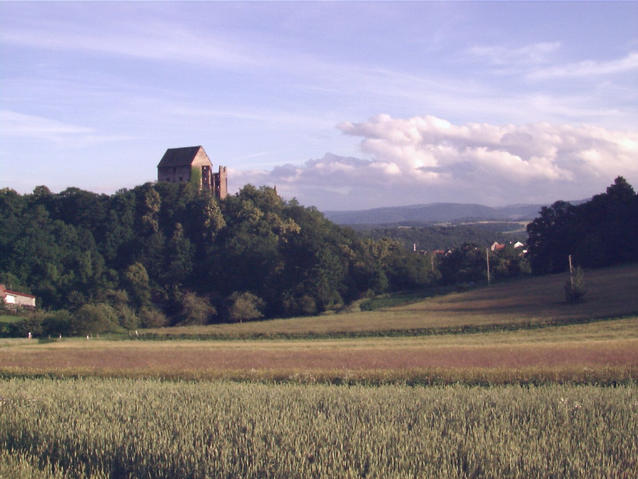The Legacy Of Świny Castle
A Fortress Through Time
The first recorded mention of Świny Castle dates back to 1108 in the chronicle of Kosmas, named Zvini in Polonia. Subsequently, it appeared in a document by Pope Hadrian IV as the castellan stronghold of Zpini. By 1244, it was cited as the abode of Jaksa, the castellan of Svyn. The castle's strategic significance waned in the late 13th century with the rise of newer fortifications, yet it transitioned into noble hands, marking a new chapter in its storied existence.
In the 13th century, Świny was owned by notable figures such as Tader in 1230, Jaksa in 1242, and Piotr ze Świn in 1248 or Hainricus 1323 who made a name for himself as the first Silesian Crusader.
The castle eventually passed to the knightly Świnków (von Schweinichen) family in the early 14th century, who inhabited and fortified it until the 18th century. Mid-14th century saw the construction of a formidable four-story residential and defensive tower with 2.5-meter-thick walls, a testament to the era's architectural ingenuity and the family's determination to defend their dominion.

Renaissance Transformation and Mystical Gatherings
The 17th century heralded a transformative era for Świny Castle under Johann Sigismund von Schweinichen. The castle evolved into a Renaissance-style residence, attracting mystics, alchemists, and Rosicrucians. Johann Sigismund established a theosophical circle and created a library rich in mystic and theosophical texts. The castle became a beacon of intellectual and spiritual inquiry, hosting figures like the mystic Jakob Boehme, who penned significant works within its walls.

Architectural Evolution and Decline
Over centuries, Świny Castle underwent numerous renovations, expanding its fortifications and residential areas. The addition of a rectangular palace, new defensive walls adapted for firearms, and a moat marked its architectural maturity. However, the castle's decline began in the 18th century following looting by Russian troops and subsequent neglect. Attempts at preservation were made in the early 20th century, yet it was not until the late 1950s that archaeological efforts revealed more of its past, including the existence of an early medieval settlement on its grounds.

Your Trip to Świny Castle
After changing hands multiple times and suffering from natural disasters and wars, Świny Castle remains a captivating ruin, embodying the spirit of an era where knights, mystics, and nobles walked its halls. Its story is not just one of architectural might but of the intellectual and spiritual pursuits that flourished within its walls.
If you visit the ruins, it's recommended to take advantage of your stay by also exploring other castles in the vicinity. They are just a few kilometers away, such as
Distance:
43 km
Drive time:
60 min
Duration:
min. 3-4 h







